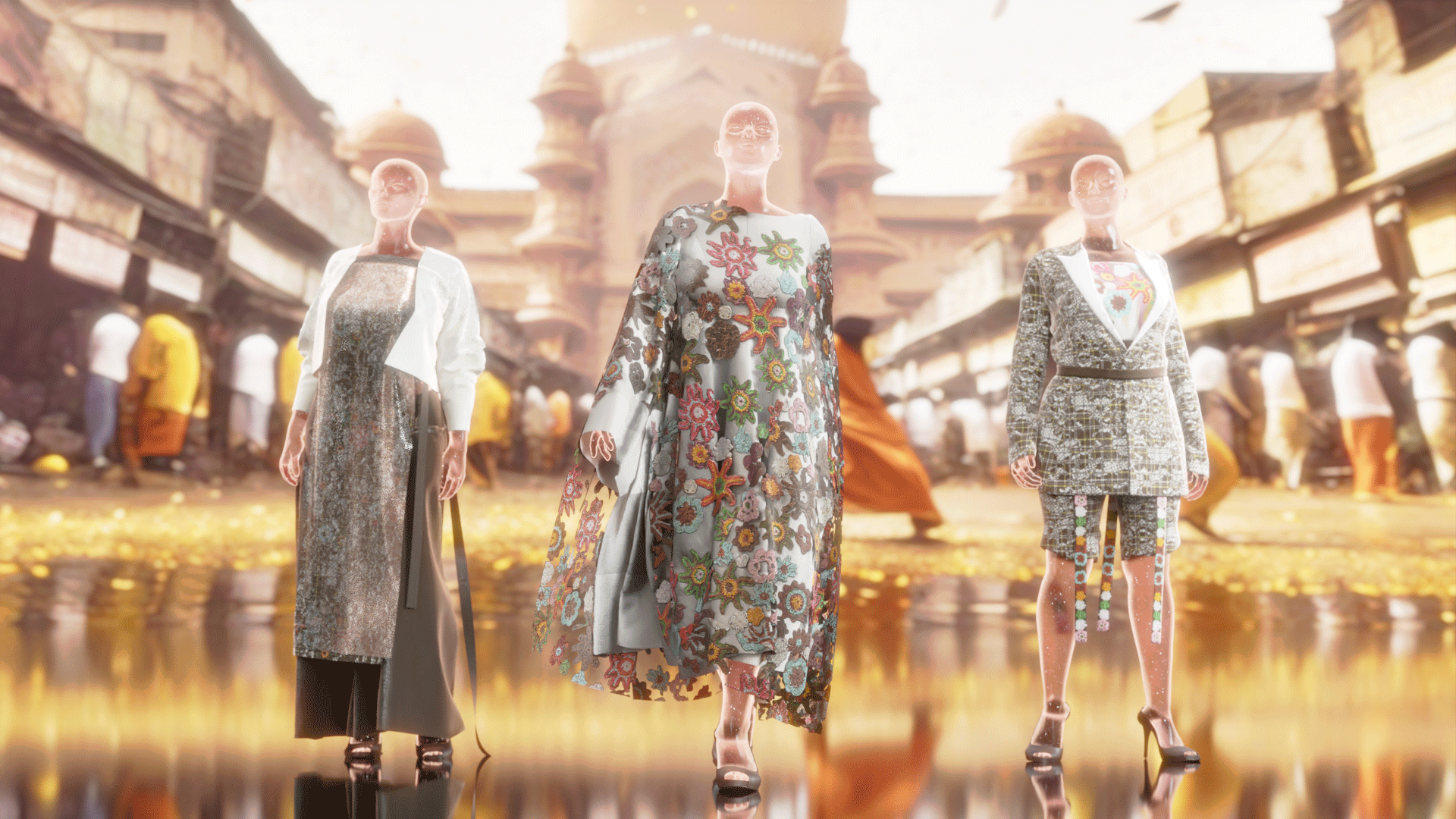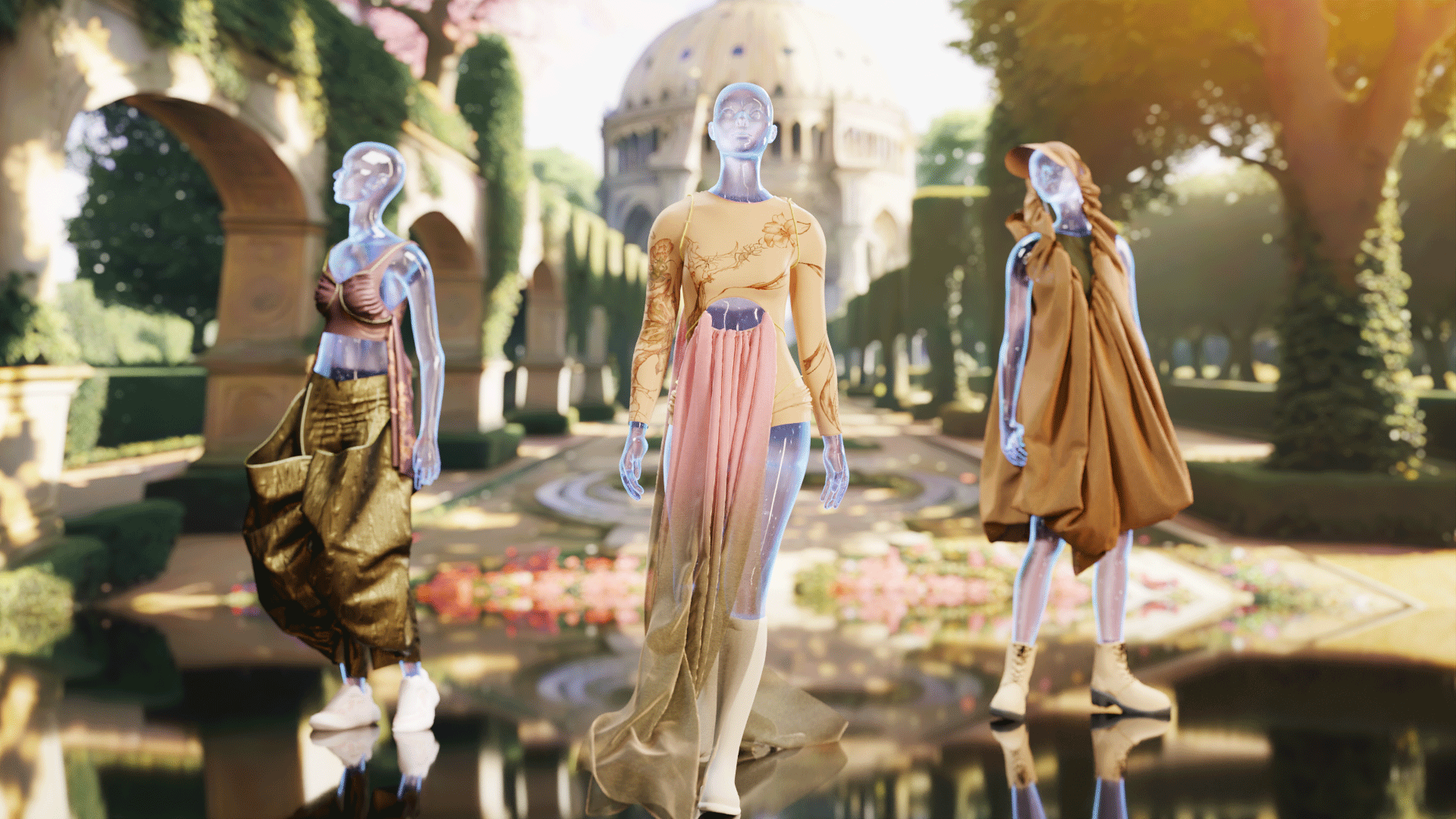Amidst a global shift towards emerging technologies, the demand for 3D content is primed for unprecedented expansion. Across various domains—spanning from interactive entertainment like video games and cinematic productions to forward-thinking fields like fashion design and architectural innovation—3D tools stand as indispensable assets. Not only do they promise futuristic and immersive experiences, but they also offer tangible benefits such as business optimisation, cost-efficiency, and sustainable practices.
In the fast-paced world of fashion, brands and designers face immense pressure to deliver collections rapidly. This adds to the reasons why both emerging labels and established luxury houses are embracing innovative strategies and harnessing new tools and techniques. One key aspect of this transformation is the integration of 3D software into the production process. While this offers promises of efficiency and innovation, it’s imperative to evaluate both its advantages and limitations. What are the implications of this technological shift, and what challenges await? As the industry advances, what lies ahead for 3D fashion design?
Visualizza questo post su Instagram
The Impact of 3D Tools on Fashion Supply Chains
As reported by Vogue, digital design and 3D assets have become integral technologies within fashion supply chains. These assets play a pivotal role across various stages, ranging from initial design processes to the creation of e-commerce visuals and augmented reality (AR) experiences.

Istituto Marangoni Mumbai student Shreya's Digital Collection special mention. The collection is part of the first Istituto Marangoni Digital Fashion Experience, where avatar-models revealed avant-garde digital collections from the seven Schools of Fashion across the globe.
Enhancing Fashion Sustainability Through 3D Software Solutions
According to a study by Quantis, the fashion industry is accountable for approximately 8% of the world’s greenhouse gas emissions. However, embracing 3D software for physical sampling and prototyping presents a promising solution to reduce this environmental footprint. As a result, creatives are now compelled by brands to excel in 3D fashion design, making proficiency in 3D software imperative.
What 3D Programs Are Essential for Today’s Fashion Designers?
In today’s fashion landscape, designers primarily rely on two software options: CLO3D and Marvelous Designer. CLO3D is considered the industry standard, particularly within the fashion system, while Marvelous Designer is more popular among game designers. Both programs share the common goal of simulating the design process within a virtual space.

Istituto Marangoni Shanghai student Jin Leyao's Best Digital Collection (Jury Prize). The collection is part of the first Istituto Marangoni Digital Fashion Experience, where avatar-models revealed avant-garde digital collections from the seven Schools of Fashion across the globe.
The Essential Role of Training in Embracing Virtual Design Technologies
However, transitioning to these 3D programs can pose challenges for designers unfamiliar with such software. Becoming proficient in 3D fashion design requires dedicated training, and mastering the intricacies of these tools may initially seem daunting.
Acknowledging the significance of digital skills in the contemporary fashion industry, some educational institutions, such as Istituto Marangoni, have incorporated 3D software training into their curriculums. By providing design students with this expertise, these schools ensure that graduates are well-equipped to meet the evolving demands of the industry when they enter the workforce.
Pros and Challenges Facing Emerging Brands and Luxury Powerhouses
The adoption of 3D fashion design is increasingly prevalent among smaller brands operating with limited budgets for physical sampling. This approach eliminates the necessity for dedicated atelier spaces and prototype alterations, which can often incur costs and result in wastage. All that’s needed is a laptop with the requisite software, allowing designers the flexibility to work remotely. However, this convenience comes at a cost; standard licenses typically range between $39 to $50 per month, albeit with the option of a free monthly trial.
For established fashion brands, transitioning to a 3D-based system is no easy task and presents significant challenges. The shift entails substantial investments in powerful hardware and the training of existing staff or the hiring of new personnel with relevant expertise. Additionally, luxury powerhouses, renowned for their impeccable imagery, face unique considerations. Embracing a digitally driven future across all aspects of their business also requires a departure from traditional photography-based campaigns to 3D-rendered images, necessitating the implementation of novel advertising methodologies.

Istituto Marangoni Paris student Tia Najjar's Best Digital Collection (web prize). The collection is part of the first Istituto Marangoni Digital Fashion Experience, where avatar-models revealed avant-garde digital collections from the seven Schools of Fashion across the globe.
A Pivotal Moment: Fashion Design in Both Real and Virtual Environments
The advent of 3D fashion design tools is empowering fashion designers to create realistic digital products, proving strategic for brands aiming to present their collections in virtual fashion shows or establish inventory-free showrooms and AR-powered fit sessions, as highlighted by Brian Cheng, Director of Digital Transformation at Avery Dennison.
However, such transformative shifts within the industry are set to disrupt various sectors significantly. As the fashion industry gradually embraces new technologies, we anticipate witnessing consequential changes. At present, these changes are most prominent in fashion design. However, the emergence of AI is also fueling a surge in 3D-generated advertising, rapidly gaining momentum.
Visualizza questo post su Instagram
Who’s to say that the next big thing is not hidden in software?
Natalia Shibaeva
Visual Designer and Fashion Styling & Creative Direction alumna, London



